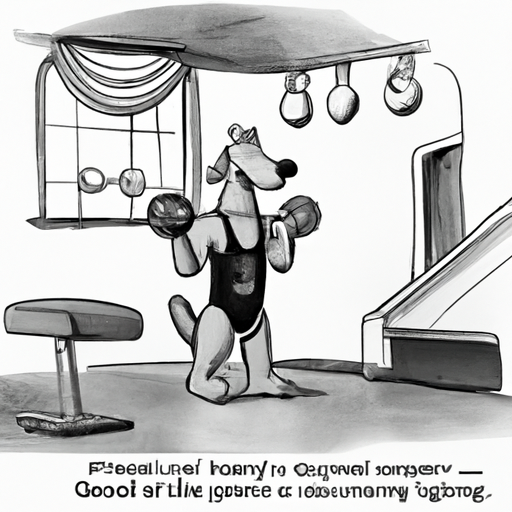As a caregiver, the health and fitness of your dog are crucial. The same way you would take care of a child or an elderly person, your canine companion also requires physical workouts to maintain a healthy lifestyle. This guide will walk you through different aspects of a dog workout regime, and how you can effectively incorporate them into your dog’s routine.
Understanding the Importance of Dog Workouts
First, it’s important to understand why dog workouts are essential. Regular exercise contributes to:
- Maintaining a healthy weight, thus preventing obesity-related issues
- Strengthening their cardiovascular system
- Keeping their joints flexible and muscles toned
- Reducing behavioral problems such as excessive barking, chewing or digging
Just like humans, dogs also need physical activity to stay fit and happy.
Assessing Your Dog’s Exercise Needs
Different breeds of dogs have different exercise needs. A Labrador Retriever, for instance, will need more physical activity than a Shih Tzu.
Here are some general guidelines to consider:
- Puppies usually have a lot of energy and may need several short periods of exercise, along with playtime each day.
- Adult dogs, particularly active breeds, require more than an hour of exercise each day.
- Older dogs still need to be kept active but may require shorter, less strenuous walks.
Different Types of Dog Workouts
There are various types of exercises that you can incorporate into your dog’s workout routine. Here are a few:
- Walks: This is the most common and easiest to implement.
- Fetch: This game exercises your dog’s mind and body.
- Swimming: It’s a great low-impact exercise, especially for older dogs with joint issues.
- Agility Training: This is a fun and challenging workout for dogs.
Creating a Balanced Workout Routine
A balanced workout routine should include both physical exercise and mental stimulation. Here’s a simple daily routine you can start with:
| Time | Activity | Duration |
|---|---|---|
| Morning | Walk | 30 min |
| Afternoon | Fetch Game | 15 min |
| Evening | Agility Training | 20 min |
Safety Tips During Workouts
During workouts, remember to:
- Start slow and gradually increase the intensity
- Keep them hydrated
- Avoid exercise during the hottest part of the day
- Always check for signs of fatigue or stress
The Role of Diet in Your Dog’s Fitness
Just like in humans, diet plays a significant role in your dog’s fitness. A balanced diet provides the necessary energy for workouts and aids in recovery. Always consult with your vet to determine the best diet for your dog.
The Benefits of Regular Vet Check-ups
Regular vet check-ups are crucial to ensure your dog is fit for exercise. The vet can assess your dog’s heart, weight, and overall condition and provide guidelines on the intensity of workouts.
Frequently Asked Questions (FAQ)
How much exercise does my dog need?
It depends on their breed, age, and health. Generally, dogs should get between 30 minutes to 2 hours of exercise each day.
Is it possible to over-exercise my dog?
Yes, excessive exercise can lead to injuries. Always start with mild workouts and gradually increase the intensity based on your dog’s response.
How do I know if my dog is getting enough exercise?
A tired dog is a happy dog. If your dog is restless, it’s probably not getting enough exercise.
What if my dog doesn’t like to exercise?
Some dogs are less active than others. Try different activities to see what they enjoy. If your dog is consistently resistant to exercise, consult with a vet.
Now, you are equipped with the knowledge to ensure your dog remains fit and healthy. Remember, a well-exercised dog is a happy dog!



